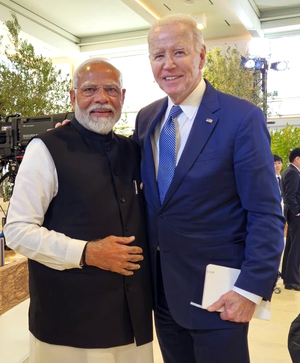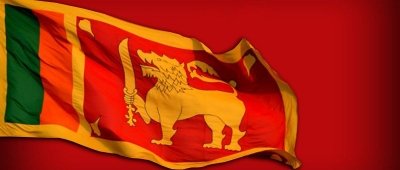Author: Tharik HussainFri, 2017-03-17ID: 1489685267893663000Next month will see the UAE budget airline Flydubai become the first non-Bangladeshi international carrier to land at Osmani International Airport in Sylhet in the country’s northeast.Almost nothing is written about the Sylhet region in popular travel literature. In fact, very few travelers have even heard of the place, let alone ventured there. So, what can you expect of the area also known as the Surma Valley? Here are five things to get intrepid travelers excited about this lush, green corner of Bangladesh, plus one amazing fact about Sylhetis.Be like BattutaSylhet may not appear in modern travel articles, but it is mentioned in the greatest piece of Muslim travel writing ever, Ibn Battuta’s “Rihla” or “Travels.” In 1345 the famous Moroccan traveler came to the Surma Valley looking for famous Muslim scholar Shah Jalal. Ibn Battuta describes him as “among the greatest (scholars) and most remarkable men” and says he was living with the people “of those mountains” after converting them to Islam. Ibn Battuta was right; Bangladeshis say Islam became dominant in the country because of Shah Jalal, thought to be from Konya in Turkey. When you come to Sylhet, be like Battuta and visit the great Sufi scholar. His tomb is in the Shah Jalal Mazar Shariff in the city’s north, and is one of the town’s most interesting and famous historic sites. Birdwatching blissSitting at the confluence of three great rivers, Bangladesh is a country shaped by water. This has its advantages, especially if you love birdwatching. Around Sylhet, geological conditions have led to the creation of huge, shallow depressions filled with water known locally as “haors,” and they are a magnet for migratory birds, especially those on the Siberian pathway. Birdwatchers have counted more than 170 species using northeast Bangladesh as a pit stop. Among them, the white-eyed and red-crested pochards, the baikal teal, a wealth of crakes and raptors. Whatever you do, do not board that Flydubai flight without your binoculars.Drink the dream cuppa If you love tea, you will love Sylhet. Tea is Bangladesh’s second-largest cash crop export, and the finest comes from the rolling green hills of Sylhet, especially around Sreemangal, the region’s tea capital. The British, who were equally fond of tea, set up most of the estates here. These beautiful tea estates can be explored with permission from the owners or you can join one of the special tours that show you the journey of tea from seed to cup. Nothing, though, beats a cycle through these serene gardens, with only one way to cool yourself down afterwards — by trying the local world-famous “seven-layered” cup of tea. An astonishing cup of novelty tea with seven different, distinct layers of tea, one atop another, which when sipped, feels like your taste buds are having a little disco in your mouth.Seek out the ‘lost’ Sylheti language Contrary to popular belief, Sylhetis do not actually speak “Bangla” or “Bengali,” the lingua franca of Bangladesh. They speak Sylheti, a language in its own right, but not formally recognized for several generations. The evidence lies in the Sylheti Nagri alphabet and script that was once widely used in pre-partition days. There was even a printing press in Sylhet town publishing books in the script. If you are the type that likes to get all Lara Croft in your travels then this is your chance. It is rumored many Nagri manuscripts sit hidden in forgotten collections all over the Sylhet region and there are even Nagri inscriptions on some buildings if you know where to look. Find them, and those determined to bring the Nagri script back to life will forever be in your debt. Find endangered ‘singing’ primatesClose to the famous tea gardens of Sylhet is the Lawachara rain forest, one of the last remaining homes of the western hoolock gibbon. Of the estimated 200 left in Bangladesh, 60 live here, which is more than enough to get the David Attenboroughs in our midst extremely excited, especially when they learn that the hoolocks are famous for their elaborate songs, sung in duet form, sometimes allowing other members of the family to join in. These songs have distinct, organized sequences, so we are not just talking random screeching through the jungle, hoolocks are genuine singing apes. That’s singing monkeys, folks.Did you know Sylhetis singlehandedly changed the culinary habits of the British?Sylhetis began arriving in the UK in large numbers during the 1970s and 1980s, and one of the first things they did was open restaurants to feed all the single men. In time, it became apparent the natives were showing a keen interest in the exotic food they were serving, and so entrepreneurial Sylhetis opened up restaurants aimed at the public. With “Bangladesh” a new identity, these businessmen cleverly branded their restaurants “Indian” as well as tweaking the food to be more palatable for the British tongue. Within a few decades, every corner of Britain, from Devon to Dundee, had a Sylheti-owned “Indian” restaurant, and the phrase “going out for an Indian” entered popular British vernacular. In London’s East End, where most Sylhetis settled, it was even honored by local cockney rhyming slang, where it became known as a “ruby” (a “ruby murray” equaled “curry”). Then in the 1990s, it was all made official when then-Foreign Secretary Robin Cook declared the chicken tikka masala (one of the Sylhetis “tweaked” dishes) as “Britain’s true national dish.” • life.style@arabnews.com
Main category: Travel








